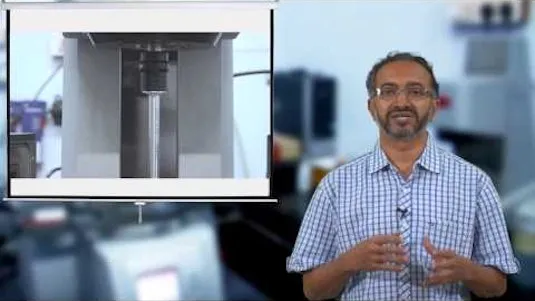
Containerizing Angular Applications with Docker 
This course provides an in-depth look at how to use Docker to containerize Angular applications. Learn how to write custom dockerfiles, leverage multi-stage dockerfiles, and use Docker Compose for container orchestration. Gain the skills to build and run your Angular application code with Docker. ▼
ADVERTISEMENT
Course Feature
![]() Cost:
Cost:
Free Trial
![]() Provider:
Provider:
Pluralsight
![]() Certificate:
Certificate:
Paid Certification
![]() Language:
Language:
English
![]() Start Date:
Start Date:
On-Demand
Course Overview
❗The content presented here is sourced directly from Pluralsight platform. For comprehensive course details, including enrollment information, simply click on the 'Go to class' link on our website.
Updated in [March 06th, 2023]
(Please note the following content is from the official provider.)
Learn how to build and run your Angular application code using Docker containers. Explore how to write dockerfiles for custom images, leverage multi-stage dockerfiles, container orchestration with Docker Compose, and much more.
The Angular CLI provides a great way to build and run Angular applications locally, but what do you do when you need to build Angular in another environment? How do you deploy your Angular application between development, staging/QA, and production environments while ensuring that everything works as planned? In this course, Containerizing Angular Applications with Docker, you'll explore the role that Docker containers can play in simplifying the process of building and deploying Angular applications. First, you'll learn about the role of images and containers, and image registries. Next, you'll discover how to write custom multi-stage Dockerfiles for building Angular code. Then, you'll delve into different server options such as nginx for running your Angular applications efficiently and consistently across environments. Finally, you'll explore how to orchestrate multiple containers using Docker Compose and .yml files. By the end of this course, you'll have the necessary knowledge to efficiently build and run Angular applications across multiple environments by utilizing Docker containers.
Topics:
Course Overview
Angular and Containers
Creating a Multi-stage Dockerfile
Deploying the Image and Running the Container
Running Multiple Containers
Summary
(Please note that we obtained the following content based on information that users may want to know, such as skills, applicable scenarios, future development, etc., combined with AI tools, and have been manually reviewed)
Containerizing Angular Applications with Docker is a course that teaches learners how to build and run their Angular application code using Docker containers. Learners will explore how to write dockerfiles for custom images, leverage multi-stage dockerfiles, container orchestration with Docker Compose, and much more. The course will cover topics such as Angular and Containers, Creating a Multi-stage Dockerfile, Deploying the Image and Running the Container, Running Multiple Containers, and Summary. By the end of the course, learners will have the necessary knowledge to efficiently build and run Angular applications across multiple environments by utilizing Docker containers.
[Applications]
Upon completion of this course, learners will be able to apply the knowledge gained to containerize their Angular applications with Docker. They will be able to write custom multi-stage Dockerfiles for building Angular code, deploy the image and run the container, and run multiple containers. Additionally, they will be able to orchestrate multiple containers using Docker Compose and .yml files.
[Career Paths]
1. Angular Developer: Angular Developers are responsible for developing and maintaining web applications using the Angular framework. They must have a strong understanding of the Angular framework, HTML, CSS, and JavaScript. They must also be able to troubleshoot and debug any issues that arise. As the demand for web applications continues to grow, the need for Angular Developers is expected to increase.
2. Docker Engineer: Docker Engineers are responsible for creating and managing Docker containers. They must have a strong understanding of the Docker platform and be able to create and maintain Docker images. They must also be able to troubleshoot and debug any issues that arise. As the demand for containerized applications continues to grow, the need for Docker Engineers is expected to increase.
3. DevOps Engineer: DevOps Engineers are responsible for automating the development and deployment of applications. They must have a strong understanding of the DevOps process and be able to create and maintain automated pipelines. They must also be able to troubleshoot and debug any issues that arise. As the demand for automated applications continues to grow, the need for DevOps Engineers is expected to increase.
4. Cloud Architect: Cloud Architects are responsible for designing and implementing cloud-based solutions. They must have a strong understanding of cloud computing and be able to create and maintain cloud-based architectures. They must also be able to troubleshoot and debug any issues that arise. As the demand for cloud-based solutions continues to grow, the need for Cloud Architects is expected to increase.
[Education Paths]
1. Bachelor of Science in Computer Science: This degree program focuses on the fundamentals of computer science, such as programming, software engineering, and computer architecture. It also covers topics such as artificial intelligence, data structures, and algorithms. With the increasing demand for software development and the rise of containerization, this degree path is becoming increasingly popular.
2. Bachelor of Science in Information Technology: This degree program focuses on the application of technology to solve business problems. It covers topics such as network security, database management, and web development. With the increasing demand for containerized applications, this degree path is becoming increasingly popular.
3. Master of Science in Computer Science: This degree program focuses on advanced topics in computer science, such as machine learning, distributed systems, and software engineering. It also covers topics such as artificial intelligence, data structures, and algorithms. With the increasing demand for containerized applications, this degree path is becoming increasingly popular.
4. Master of Science in Information Technology: This degree program focuses on the application of technology to solve business problems. It covers topics such as network security, database management, and web development. With the increasing demand for containerized applications, this degree path is becoming increasingly popular.
Course Provider

Provider Pluralsight's Stats at AZClass
Pluralsight ranked 16th on the Best Medium Workplaces List.
Pluralsight ranked 20th on the Forbes Cloud 100 list of the top 100 private cloud companies in the world.
Pluralsight Ranked on the Best Workplaces for Women List for the second consecutive year.
AZ Class hope that this free trial Pluralsight course can help your Docker skills no matter in career or in further education. Even if you are only slightly interested, you can take Containerizing Angular Applications with Docker course with confidence!
Discussion and Reviews
0.0 (Based on 0 reviews)
Explore Similar Online Courses

Badminton On Court Fitness Training

Rheology of Complex Materials

Python for Informatics: Exploring Information

Social Network Analysis

Introduction to Systematic Review and Meta-Analysis

The Analytics Edge

DCO042 - Python For Informatics

Causal Diagrams: Draw Your Assumptions Before Your Conclusions

Whole genome sequencing of bacterial genomes - tools and applications

Managing Docker on Linux Servers

Fundamentals of Docker and Kubernetes for NET Developers


Start your review of Containerizing Angular Applications with Docker